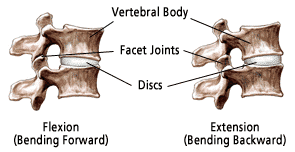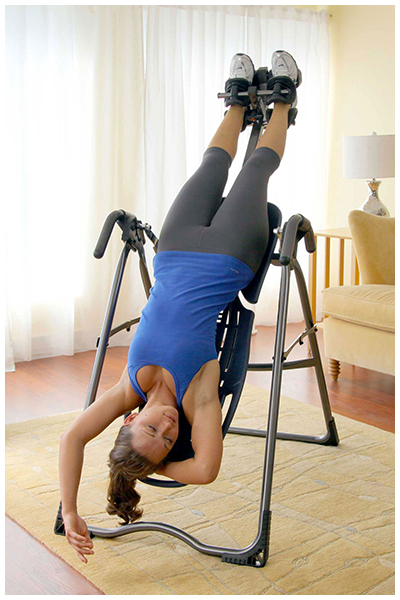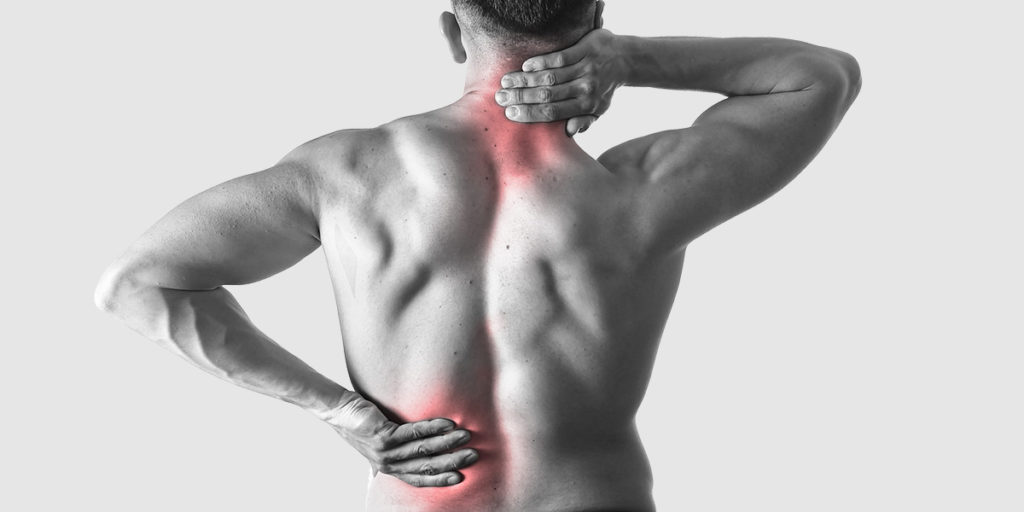Facet syndrome, also known as facet joint disease or osteoarthritis, is an arthritis-like condition of the spine. It is caused by degenerative changes to the joints between the bones of the spine. Millions of Americans suffer from facet syndrome and they may not even know it. Unfortunately, once symptoms become noticeable, a considerable amount of the cartilage inside the facet joint may have already been worn down. Thankfully, there is hope to help relieve the pain caused by facet syndrome without the need for surgery. Understanding the causes, methods for prevention, and exploring study-backed natural solutions can give you a head start to nipping the symptoms of facet syndrome in the bud.
Facet Joint Facts

Common Causes of Facet Syndrome
Any injury, repetitive movements, obesity, poor posture, and other spine conditions that change the way facet joints align and move can lead to Facet Syndrome. This condition occurs in both men and women. It is most common between the ages of 40 and 70 and in people who are prone to arthritis. Some of the more common causes of facet syndrome include:
Weight – Carrying excess weight in the abdominal area can pull the spine forward, causing unnatural posture as the spine tries to over-compensate for extra weight. This pull and stress may accelerate the breakdown of cartilage.
Age – As we get older, the cartilage starts to wear down in joints. Because the spine is central to essential mobility, any degeneration can be debilitating.
Sports – Activities with high-impact or repetitive motions may increase the cartilage breakdown in the spine.
Changes in the facet joints can begin with the deterioration of a vertebral disc. As the load of the bodyweight shifts to the facet joint, the cartilage breaks down, the joint space narrows, and the bones rub together. This happens most often in the neck or arch of the back.

Natural, Non-Invasive Ways to Relieve Pain from Facet Syndrome
While Facet Syndrome can’t be reversed, there is medical evidence that supports incorporating exercise and making lifestyle changes with careful management of your back pain can help promote healing and contribute to a better quality of life. Many patients are often encouraged to pursue less invasive techniques to relieve pain before exploring options like injections & surgery as these procedures are higher-risk.
The most common solutions are:
NSAIDs & Medications – Medications like NSAIDS or another anti-inflammatory prescription, topical patches, creams, salves, and braces are common options. If your facet syndrome also causes back muscle spasms, a muscle relaxer may be prescribed. But keep in mind that long-term use can have a number of negative side effects.
Movement – Light exercise may be used to strengthen muscles, improve flexibility, and increase blood flow to the surrounding soft tissues. While exercise may not directly relieve pain or cure facet joint syndrome, keeping the muscles healthy may reduce additional pressure on the joints that cause pain.
Posture – Consistently making deliberate daily choices to improve posture and making positive behavior modifications may result in improved body mechanics and spine alignment.
Hot/Cold Therapy – Using hot or cold packs can penetrate deep within the muscles helping to alleviate aches and pains.
Massage & Chiropractic Visits – Working with a professional to release muscle tension, and stimulate blood flow to the affected area, can be an effective solution.
Inversion Therapy – Inversion Therapy uses gravity-assisted traction to relieve the pressure of the spinal discs, in turn, relieving pain.
How Inversion Therapy Helps Relieve Pain from Facet Syndrome

A study of 23 patients diagnosed by MRI with facet joint arthrosis were subjected to spinal decompression therapy for 30 minutes a day for 20 days. 75% of patients reported good or excellent results from their symptoms.1
Another study of 175 patients who received gravity-facilitated lumbar traction therapy. After 8 inversion treatments, 155 patients were able to return to their jobs full time. This is great news for those suffering from back pain and trying to return to a sense of normalcy in life. The study concluded that the main basis for improvement was the stretching of para-spinal vertebral muscles and ligaments and possibly the widening of intervertebral discs.
Users of inversion therapy often credit Teeter with improving their lives in drastic ways. A 79-year-old Teeter user from Coventry, RI says her life was saved by inversion therapy. “My son Frank bought the Teeter inversion machine for me. In the beginning, I resisted getting on this machine, but my son convinced me to try. Then I tried, and it worked! I felt my back stretch and had immediate relief. I could move again, I was so happy! Soon I could walk again and I didn’t feel pain anymore!”
To optimize the benefits of inversion therapy for Facet Syndrome, you will want to work up to inverting at a 60-degree angle. Teeter makes it easy because of the secure and comfortable design. In fact, Teeter Inversion Tables are indicated to help relieve pain associated with Facet Syndrome.
Teeter Inversion Table
Medical Device indicated for Facet Syndrome and other back pain-related conditions
Teeter Inversion Tables are registered with the FDA as a 510(k) medical device. In 2016, a new review of information and studies resulted in the authorization of an expanded list of back pain-related conditions like Facet Syndrome.
When using an inversion table each joint will be decompressed at the same weight that compresses it while upright. Movement while in an inverted position encourages realignment and improves flexibility. Using a gravity-assisted inversion table with Teeter gives you the ability to comfortably elongate the spine, re-hydrate, and rejuvenate the discs between each vertebra. A review of patients with a diagnosis of facet syndrome was found to be successful at reducing pain to a 0 or 1 on a 0-5 pain scale for 71% of cases studied2. The study also found an increase in spine mobility for 77% of patients with mobility limitations.
Why Inversion Therapy with Teeter:
Minutes a Day
The best part about using a Teeter Inversion Table is getting the benefits of back pain relief in just minutes a day. We recommend starting out within 1-2 minutes per day at least 3 times per week. As with any other exercise program, consult your doctor before beginning and listen to your body.
Easy to Use
Just set your height, lock in, recline and relax. Simple arm movements shift your body weight so you can control your rotation and angle. The greater the angle, the greater the stretch.
Comfortable
Teeter is user-friendly and designed to be used in your home. This means no trips to the chiropractor, no uncomfortable long appointments, and no ongoing costs for prescriptions or visits. You can get relief from back pain on your time.
Long-Term Satisfaction
Teeter Inversion Tables not only help relieve current back pain but prevent future issues from occurring. Target your back pain at the source and keep it from coming back. Because it only takes 1-2 minutes a day to get the benefits of inversion therapy, it’s easy to incorporate into your daily routine.
Quality You Can Trust
With over 35 years of experience and hundreds of advancements to maximize control, comfort, and effectiveness, Teeter Inversion Tables are built better to deliver the benefits.
You don’t have to suffer from back pain. Using a Teeter Inversion Table is an easy, relaxing way to stop back pain in its tracks – at the source. Teeter is the leader of the industry with more than 3 million satisfied users. Choose Teeter for a better back, better body.
Don’t wait, try Teeter today!
Find Relief Now. Pay Later.
Now you can try Teeter in your own home FREE for 30-Days, 0% APR* with Affirm.
Citations:
- Earl E. Gose, William K. Naguszewski and Robert Naguszewski. Vertebral Axial Decompression Therapy for Pain Associated with Herniated or Degenerated Discs or Facet Syndrome: An Outcome Study. Journal of Neurological
Research, Volume 20, April 1998. - C. Norman Shealy, MD, PhD, and Vera Borgmeyer, RN, MA. Decompression, Reduction, and Stabilization of the Lumbar Spine: A Cost-Effective Treatment for Lumbosacral Pain. American Journal of Pain Management Vol. 7 No.
2 April 1997.
